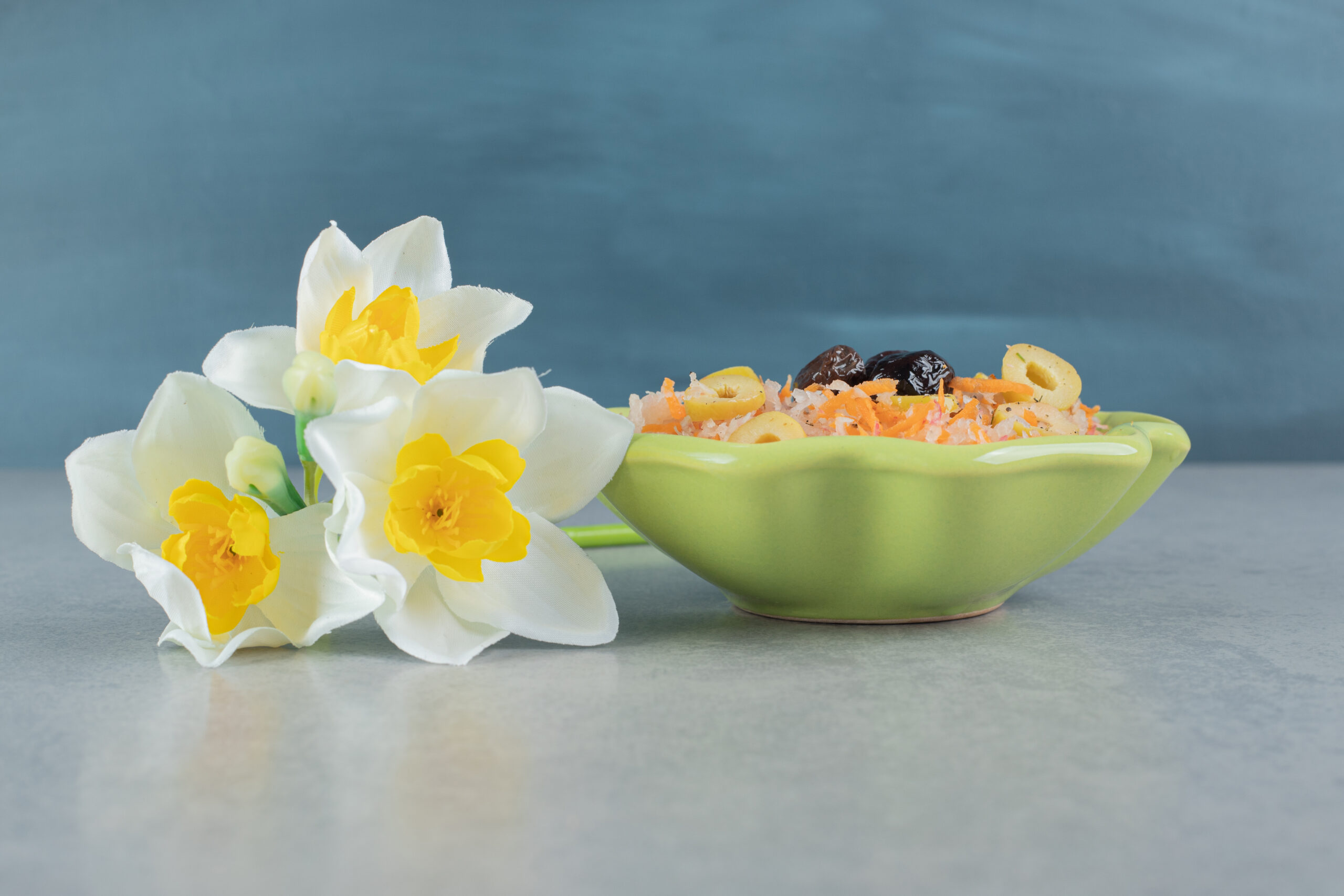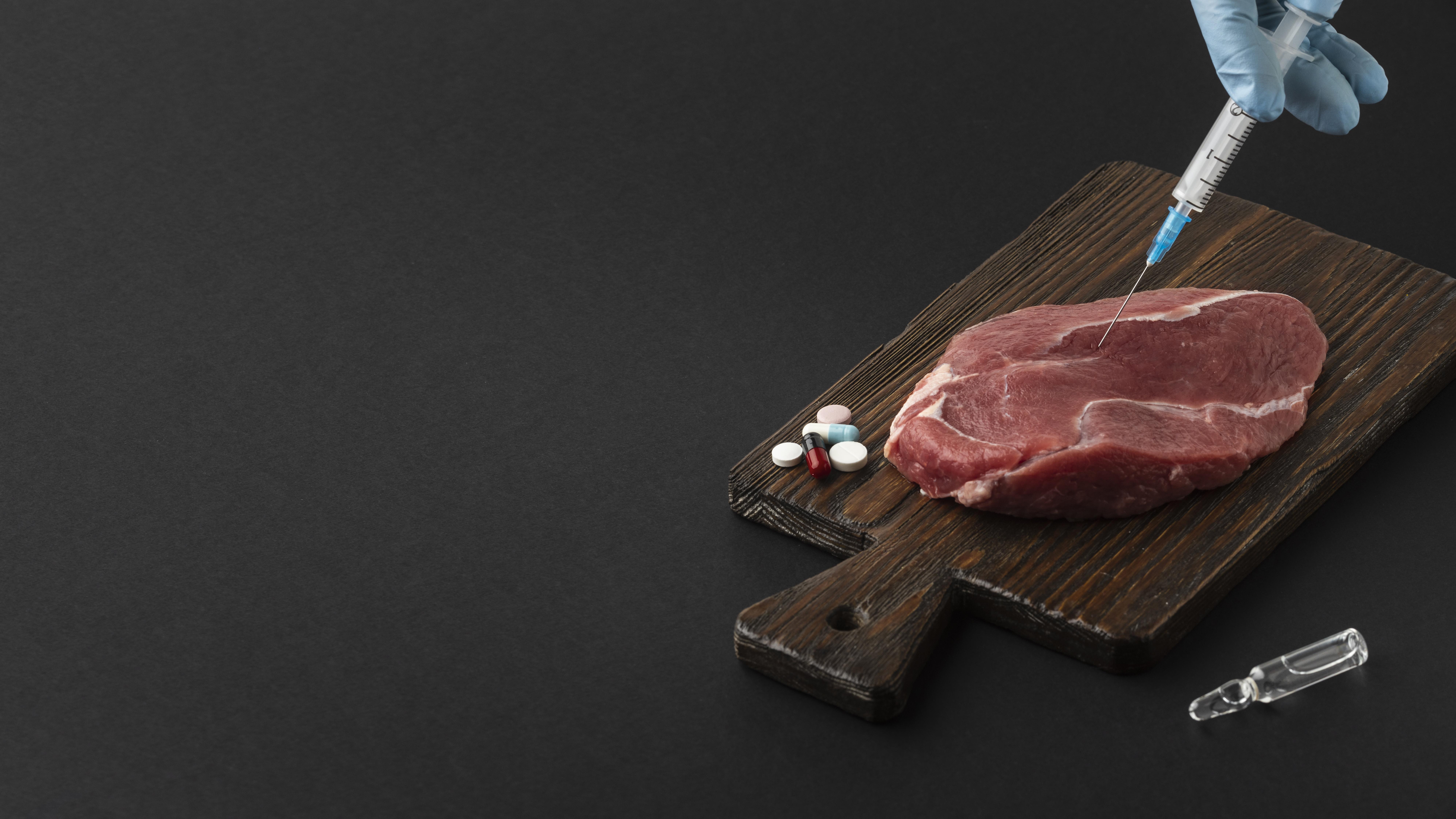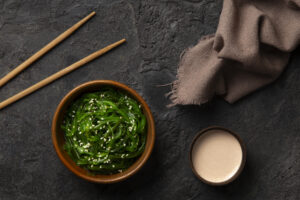Edible Flowers: A Vibrant Twist to Your Culinary Creations

Orange color carrot salad with mixed ingredients in a green plate. High quality photo
When we think of flowers, we often picture them as beautiful, fragrant additions to our gardens or bouquets, but did you know that many flowers are edible and bring a burst of flavor, color, and nutrition to your food? Edible flowers have been used for centuries in various cuisines across the world, adding an unexpected twist to dishes with their delicate petals, unique flavors, and health benefits.
In this article, we explore the fascinating world of edible flowers, highlighting some popular varieties, how to use them in cooking, and the health benefits they bring to the table.
What Are Edible Flowers?
Edible flowers are exactly what they sound like—flowers that can be safely eaten and incorporated into meals. They are rich in flavor, antioxidants, vitamins, and minerals, making them not just a treat for the eyes, but a boost to your health as well.
Not all flowers are edible, though, and it’s important to distinguish between those that are safe to eat and those that are toxic. Common edible flowers include violets, pansies, nasturtiums, marigolds, and lavender, but you can also find flowers in many fruits, vegetables, and herbs, such as zucchini flowers and herb blossoms like rosemary or basil.
A Burst of Flavor and Color
Edible flowers can be used in various forms—fresh, dried, or candied—and their flavors range from sweet and mild to peppery or spicy. Let’s take a look at some popular edible flowers and how they can elevate your dishes:
1. Nasturtiums
These vibrant flowers come in shades of red, orange, and yellow, and are known for their peppery, slightly tangy taste, similar to arugula. Nasturtiums are fantastic in salads, sandwiches, and even as garnishes for soups and appetizers. Their leaves are also edible, adding an extra layer of flavor to your dishes.
2. Lavender
Known for its fragrant, floral aroma, lavender has a sweet, slightly minty flavor. It’s often used in desserts like cakes, cookies, and ice cream, but also works wonders in savory dishes such as roasted meats or herbal butters. Lavender can also be used to infuse teas or cocktails for a relaxing, aromatic experience.
3. Pansies
Pansies come in a spectrum of bright, bold colors and have a mild, slightly grassy taste. Their delicate petals are perfect for decorating cakes, cupcakes, or fruit salads, adding a pop of color and a subtle crunch. They’re also used in jellies and syrups, making them a versatile ingredient in both sweet and savory dishes.
4. Calendula (Marigold)
Calendula petals have a slightly bitter, peppery flavor with a hint of citrusy sweetness. These flowers are perfect for adding a golden hue to dishes, and their petals can be sprinkled over soups, stews, or rice dishes. They’re also commonly used in herbal teas and skin-care products due to their anti-inflammatory properties.
5. Chamomile
Chamomile flowers, known for their apple-like scent, bring a delicate, sweet, and calming flavor to dishes. They are frequently used in herbal teas, but you can also infuse them into syrups for cocktails, or even use them to flavor honey or custards for a floral twist on traditional desserts.
How to Use Edible Flowers in Cooking
Incorporating edible flowers into your meals is a creative and visually stunning way to enhance your dishes. Here are a few ideas for using flowers in your culinary creations:
1. Salads and Garnishes
Flowers like nasturtiums, pansies, and violets are perfect for decorating salads, adding color and flavor. You can also use them as a garnish for soups, cocktails, or any plated dish to make it feel like a gourmet creation.
2. Desserts
Flowers are especially popular in sweet treats. Lavender, rose petals, and chamomile add floral notes to cakes, cookies, tarts, and ice creams. You can also candied flowers, which give a crunchy, sweet topping for desserts.
3. Infusions and Teas
Edible flowers make excellent infusions. Chamomile flowers are a classic choice for tea, but you can experiment with hibiscus, jasmine, or lavender to create floral brews. Adding flowers to cocktails and mocktails can also transform your drinks into beautiful, aromatic creations.
4. Jams, Syrups, and Vinegars
Try making your own flower-infused syrup by steeping flowers like lavender or rose petals in sugar syrup. You can use these in desserts, cocktails, or as a topping for pancakes. Flower-infused vinegar also makes for an amazing salad dressing or marinade.
5. Ice Cubes
Freeze edible flowers like violets or pansies in ice cubes to add an elegant touch to your drinks. They’re perfect for a garden party or special event, creating a beautiful presentation as they float in your beverage.
Health Benefits of Edible Flowers
Aside from their culinary appeal, many edible flowers are packed with health benefits, thanks to their high levels of antioxidants, vitamins, and minerals. Here are just a few benefits you can enjoy when incorporating flowers into your diet:
1. Anti-Inflammatory Properties
Calendula and chamomile are known for their anti-inflammatory effects, making them useful for soothing digestion and reducing skin irritation when consumed or applied topically.
2. Stress Relief
Flowers like lavender and chamomile are well-known for their calming effects. Lavender in particular has been shown to help reduce anxiety and promote better sleep, making it an excellent addition to bedtime teas.
3. Rich in Antioxidants
Many edible flowers, such as hibiscus and roses, are packed with antioxidants that fight free radicals in the body. This helps in preventing cell damage, supporting healthy aging, and boosting overall immunity.
4. Vitamin Boost
Flowers like dandelion and nasturtium are rich in vitamin C, which helps in boosting your immune system and maintaining healthy skin.
Final Thoughts: A Blossoming Culinary Trend
Edible flowers are a beautiful, flavorful, and nutritious addition to your cooking repertoire. They offer a unique way to explore new flavors, experiment with textures, and create visually stunning dishes. Whether you’re using them to add a pop of color to your salads, infusing them into syrups and drinks, or enjoying their health benefits, edible flowers are truly a blossoming trend in the culinary world.
So next time you’re in your garden or at a local farmers’ market, don’t just admire the flowers—bring them to your plate and enjoy the colorful flavors they have to offer! 🌸





